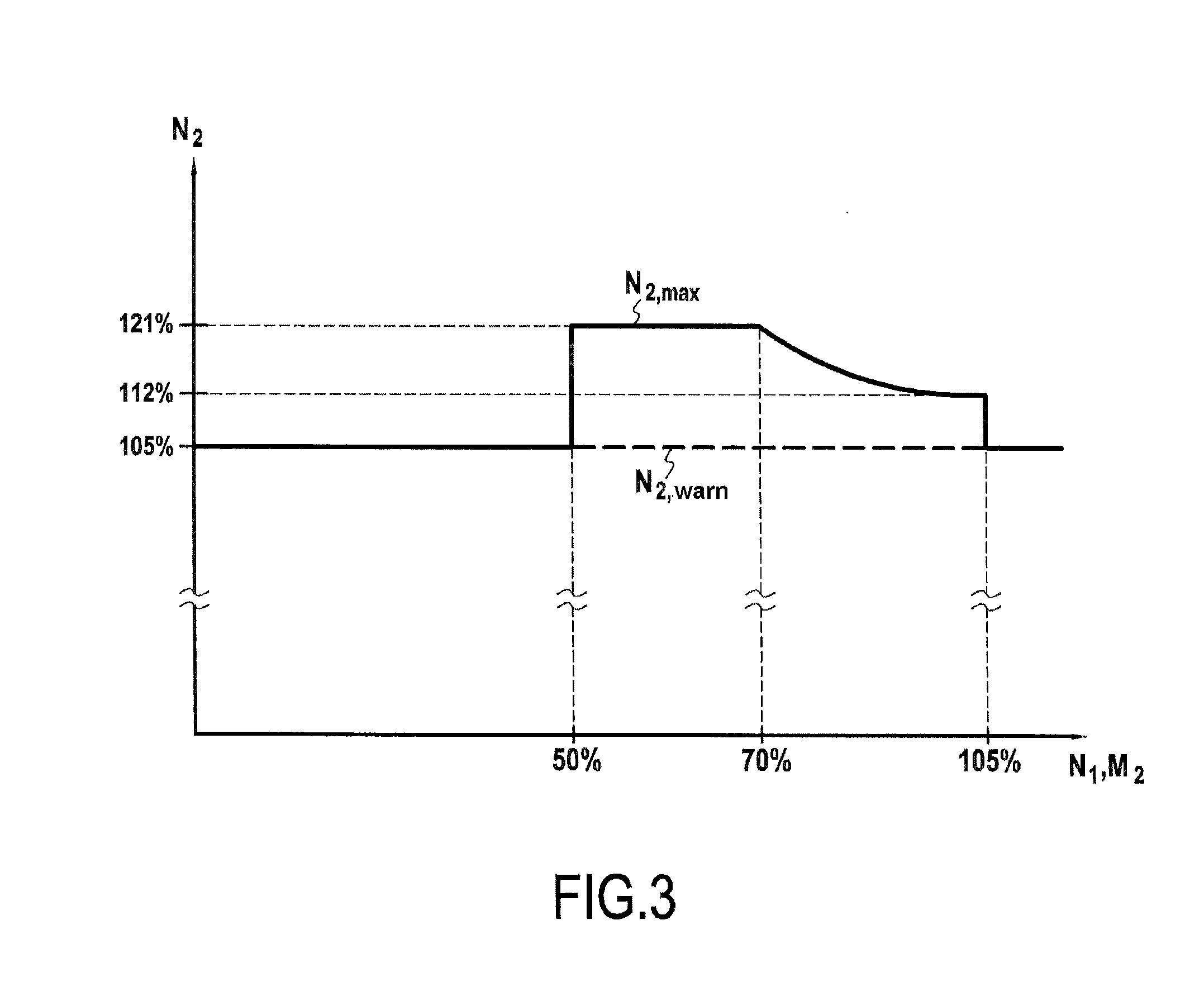Turbine engine and control method
a technology of turbine engines and control methods, applied in the direction of engines, efficient propulsion technologies, mechanical equipment, etc., can solve the problems of dangerous running away of second turbines, requiring major technical compromises, and setting a maximum threshold for the speed of rotation of the second rotary shaft requires significant overdimensioning,
- Summary
- Abstract
- Description
- Claims
- Application Information
AI Technical Summary
Benefits of technology
Problems solved by technology
Method used
Image
Examples
Embodiment Construction
[0023]The first figure shows a rotary wing aircraft 1, more specifically a helicopter having a main rotor 2 and an antitorque tail rotor 3 that are coupled to a power plant 4 in order to drive them. The power plant 4 shown comprises two turboshaft engines 5. More specifically, these engines 5 are turboshaft engines, each having a power takeoff shaft 6 connected to a main transmission gearbox 7 for driving the main rotor 2 and the tail rotor 3.
[0024]One of the engines 5 of the power plant 4 is shown in greater detail in FIG. 2. Each engine 5 comprises a compressor 8, a combustion chamber 9, a first turbine 10 connected by a first rotary shaft 11 to the compressor 8, and a second turbine 12, known as a “free” turbine, that is coupled to a second rotary shaft 13 that is coupled in turn to the power takeoff shaft 6. The assembly formed by the compressor 8, the combustion chamber 9, the first turbine 10, and the rotary shaft 11 is also known as a “gas generator”. A feed circuit 14 serves...
PUM
 Login to View More
Login to View More Abstract
Description
Claims
Application Information
 Login to View More
Login to View More - R&D
- Intellectual Property
- Life Sciences
- Materials
- Tech Scout
- Unparalleled Data Quality
- Higher Quality Content
- 60% Fewer Hallucinations
Browse by: Latest US Patents, China's latest patents, Technical Efficacy Thesaurus, Application Domain, Technology Topic, Popular Technical Reports.
© 2025 PatSnap. All rights reserved.Legal|Privacy policy|Modern Slavery Act Transparency Statement|Sitemap|About US| Contact US: help@patsnap.com



